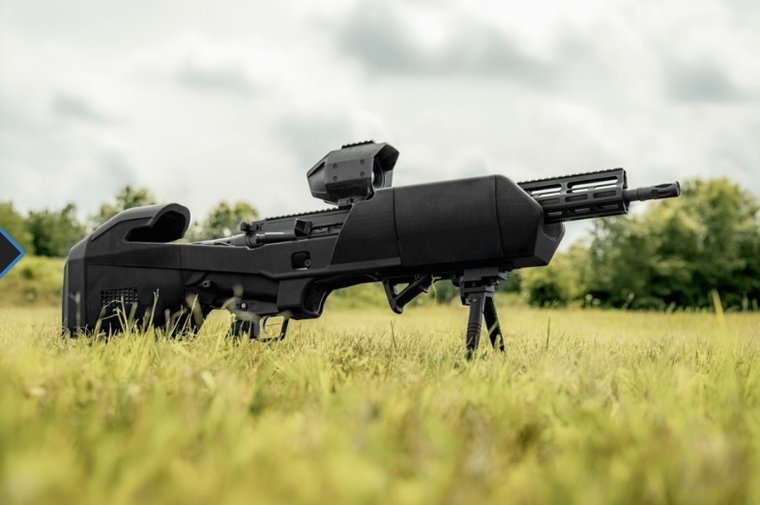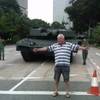
Why is the defence market ‘exploding exponentially for autonomous targeting capabilities?
Why is the defence market ‘exploding exponentially for autonomous targeting capabilities?
Details
More Products & Services
Products & Services
Defence Insight
Shephard Media
Some of the things people like you use Defence Insight for:
- Total addressable market sizing ($)
- Competitor analysis
- Cost analysis
- Market forecasting
- Growth identification
- Increasing closing ratio
- Increasing closing order value
- Estimating product potential
- Calculating sales forecasting
- Supply and demand analysis
- Total addressable market sizing ($)
- Competitor analysis
- Cost analysis
- Market forecasting
- Growth identification
- Increasing closing ratio
- Increasing closing order value
- Estimating product potential
- Calculating sales forecasting
- Supply and demand analysis
Shephard Plus Update
Shephard Media
Shephard Plus is updating in June 2018 with rich new capabilities, and is now one of the most cost-effective and valuable aerospace and defence market intell...
Military Unmanned Systems Handbook
Shephard Media
The Military Unmanned Systems Handbook (Digital Download) is an international guide to the military UV industry and provides detailed information on air, ground and sea (surface & sub-sea) vehicles as well as subsystems. What's included: Unencrypted 390+ page PDF of equipment and supplier information Market summary
Description
The growing proliferation of threats on the battlefield hasreinforced the importance of autonomous targeting technologies in future warfare.
Such technologies can identify, engage and destroy targets with minimal or no human intervention in addition to improving the performance of weapon operators in all military domains.
These capabilities provide force overmatch by enhancing the speed and accuracy of engagements. In turn, they contribute to increased lethality while also improving safety for personnel, platforms and infrastructure.
Related Articles
Why adaptability must be central to the US Army's future formations
What do Russia or Ukraine need to win the war?
US Army to field first human-machine platoon in two years
Bryan Bockmon, the CEO ofAimLock, aUS-based supplier of targeting and engagement systems for defence applications, told Shephard that the market has been 'exploding exponentially' for this type of product due to recent conflicts worldwide.
'For many years, engineering teams knew that we needed to build autonomy to properly defend our forces against growing threats from adversarial nations, but we did not get the same kind of awareness from policymakers or planners,' Bockmon remarked. 'Now many, many people are aware of the threat.'
He stressed that the development of this type of capability requires the close involvement of warfighters.
'We have been collaborating almost for 15 years with US, Canadian, British and Australian forces. A lot of new technology deployments start with experimentation. Then, we discover which formats of the technology are most useful to carry forward.'
At the SOF Week exhibition, in Tampa, Florida, AimLock will showcase products that can be applied to small arms, grenades, rockets, missiles, laser target designators deployed to individuals, UxS, rotary-wing, fixed-wing, maritime surface and subsea platforms.
The company's systems are based on its Core Targeting Modules (CTMs), which provide decision-accelerating autonomy across mission sets such as C-UAS, force protection, direct action, integrated defence, strike anti-armour, and support by fire. R-S1 stabilised remote system for small arms. (Photo: AimLock)
Its portfolio encompasses the R-M1 semi-autonomous remote weapon station for medium machine gun platforms, the I-M1 lightweight, stabilized, auto-targeting chassis designed for use with medium range rifles and the R-S1 miniature stabilised remote system for weapons weighing between 15 and 25 pounds (6.8 and 11.3 kg) such as small rifle, carbine or single shot grenade launcher.
Additionally, AimLock markets the R-S2 automated target acquisition and firing solution for weapon systems weighing from 45 to 65 pounds (20.4 to 29.4kg). It comprises automatic rifles up to .50-cal, multishot 40mm grenade launchers and rocket launchers, and small belt-fed machine guns.
Another solution is the R-S4 precision applications for weapon systems weighing between 25 and 35 pounds (11.3 and 15.8kg). It can be used with semi-automatic rifles up to 7.62x51mm, multi-shot 40mm grenade launchers and rocket launchers and small machine guns.
The AimLock Remote Operated Launch System (ROLS), in turn, combines a CTM and a single launch tube and can be integrated into a variety of new unmanned aerial and ground delivery platforms including rifles from helicopters or remotely operated weapon stations on ground vehicles, boats, or aircraft.
Those fully networked capabilities feature a modular open systems approach (MOSA) architecture and are interoperable with diverse standards of C2, battlefield management systems, and common operating picture software suites, safety and environmental certified.
Bockmon noted that the company is advancing MOSA-based targeting technologies 'to deliver scalable solutions that enhance battlefield effectiveness and save lives'.
Such technologies can identify, engage and destroy targets with minimal or no human intervention in addition to improving the performance of weapon operators in all military domains.
These capabilities provide force overmatch by enhancing the speed and accuracy of engagements. In turn, they contribute to increased lethality while also improving safety for personnel, platforms and infrastructure.
Related Articles
Why adaptability must be central to the US Army's future formations
What do Russia or Ukraine need to win the war?
US Army to field first human-machine platoon in two years
Bryan Bockmon, the CEO ofAimLock, aUS-based supplier of targeting and engagement systems for defence applications, told Shephard that the market has been 'exploding exponentially' for this type of product due to recent conflicts worldwide.
'For many years, engineering teams knew that we needed to build autonomy to properly defend our forces against growing threats from adversarial nations, but we did not get the same kind of awareness from policymakers or planners,' Bockmon remarked. 'Now many, many people are aware of the threat.'
He stressed that the development of this type of capability requires the close involvement of warfighters.
'We have been collaborating almost for 15 years with US, Canadian, British and Australian forces. A lot of new technology deployments start with experimentation. Then, we discover which formats of the technology are most useful to carry forward.'
At the SOF Week exhibition, in Tampa, Florida, AimLock will showcase products that can be applied to small arms, grenades, rockets, missiles, laser target designators deployed to individuals, UxS, rotary-wing, fixed-wing, maritime surface and subsea platforms.
The company's systems are based on its Core Targeting Modules (CTMs), which provide decision-accelerating autonomy across mission sets such as C-UAS, force protection, direct action, integrated defence, strike anti-armour, and support by fire. R-S1 stabilised remote system for small arms. (Photo: AimLock)
Its portfolio encompasses the R-M1 semi-autonomous remote weapon station for medium machine gun platforms, the I-M1 lightweight, stabilized, auto-targeting chassis designed for use with medium range rifles and the R-S1 miniature stabilised remote system for weapons weighing between 15 and 25 pounds (6.8 and 11.3 kg) such as small rifle, carbine or single shot grenade launcher.
Additionally, AimLock markets the R-S2 automated target acquisition and firing solution for weapon systems weighing from 45 to 65 pounds (20.4 to 29.4kg). It comprises automatic rifles up to .50-cal, multishot 40mm grenade launchers and rocket launchers, and small belt-fed machine guns.
Another solution is the R-S4 precision applications for weapon systems weighing between 25 and 35 pounds (11.3 and 15.8kg). It can be used with semi-automatic rifles up to 7.62x51mm, multi-shot 40mm grenade launchers and rocket launchers and small machine guns.
The AimLock Remote Operated Launch System (ROLS), in turn, combines a CTM and a single launch tube and can be integrated into a variety of new unmanned aerial and ground delivery platforms including rifles from helicopters or remotely operated weapon stations on ground vehicles, boats, or aircraft.
Those fully networked capabilities feature a modular open systems approach (MOSA) architecture and are interoperable with diverse standards of C2, battlefield management systems, and common operating picture software suites, safety and environmental certified.
Bockmon noted that the company is advancing MOSA-based targeting technologies 'to deliver scalable solutions that enhance battlefield effectiveness and save lives'.

Share
Recent Chats
Share via email
Future: handle WhatsApp here
Future: handle LinkedIn here
Future: handle Twitter here
SUBMENU HERE
Share via Chat
Copy Link


